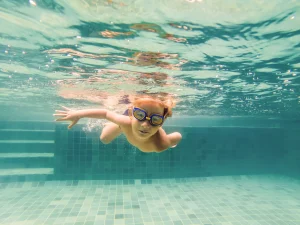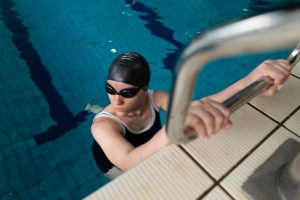Sports centers and clubs are focused on discovering new sports stars by training future Olympians athletes. However, the path to the podium may be much closer: in your home pool.
With personalized programs and quality technical supervision, competitive swimming can be developed within the domestic environment, offering a unique and transformative experience to children and teenagers dreaming of an Olympic medal.
Discover how to develop high-level competitive swimming skills at home and how the Olympic-based training model yields significant results.
Is it possible to develop competitive skills by training future Olympic athletes at home?
The traditional model of training future Olympians athletes involves fixed structures, strict routines, and frequent travel. While effective, this format can become exhausting for families and children who need to balance studies, nutrition, rest, and training.

Consider a child living in Chelsea, for example. If they were to train at the London Aquatics Centre, they would have to spend an hour commuting.
On the other hand, when the coach visits the student’s home, it’s possible to align performance and quality of life. Professionals training future Olympians athletes in a familiar environment have found better sports adaptation primarily due to emotional security and a close relationship between the student, instructor, and family.
Additionally, customization is key. Each session is planned based on the athlete’s individual characteristics, taking into account age, technical level, goals, available time, and pool type.
With close supervision from a coach correcting errors and encouraging performance, progress tends to be faster and more consistent.
Olympic training at your residence
You might be wondering if effective training is possible in your residential pool.
Indeed, space limitations are often seen as an obstacle, but experienced coaches know how to adapt routines to any type of pool. Technical work, endurance, breath-holding, speed, and even race simulation are achievable even in smaller pools.
Additionally, outside the water, training is complemented by functional exercises, educational activities, and mental concentration and visualization practices, all of which are essential for high-level competition performance.
Another important aspect is that coaches training future Olympic athletes have access to effective technologies such as video analysis, biomechanics, and time measurement.
The coach records the student’s swim and then analyzes frame by frame movements, optimizing each stroke phase. The advantage is that the equipment used is portable and can be taken anywhere.
This way, every student has access to the best tools to improve their techniques without leaving home.
Starting early ensures a solid foundation for the Podium

Children who start sports in the early years of life generally perform better when properly instructed.
Some believe that training at home means lighter workouts. However, this statement is quite mistaken. With the right focus and a well-structured pedagogical approach, it’s possible to train Olympic athletes from a very young age.
The initiation phase in competitive swimming should prioritize:
- Correct technical fundamentals from the first movements;
- Teaching the four Olympic swimming styles: freestyle, backstroke, breaststroke, and butterfly;
- Gradual development of physical and respiratory endurance;
- Development of motor skills, coordination, and posture in the water;
- Introduction to strategic concepts such as turns, starts, and race pace.
The advantage of starting early is to ensure that the student grows with a solid foundation, minimizing technical flaws and expanding their ability to respond to more demanding stimuli in the future.
Measured progress in Olympic swimmer training
Another advantage of the home model is continuous and personalized monitoring. Unlike large classes in gyms and clubs, here the coach deeply understands the student, monitors their progress daily, and adjusts plans for high-performance training.
Being fully focused on a single student allows the coach to:
- Identify specific talents such as speed, endurance, technique, or aptitude for a specific swimming style;
- Correct technique or movement flaws in real-time;
- Adjust training and loads to prevent injuries;
- Develop classes in a personalized manner respecting each student’s profile.
In addition, the instructor usually has direct contact with parents and guardians to understand possible performance losses due to external factors.
In personalized training for young athletes, coaches can conduct periodic evaluations, simulate competitions, and establish routines for rest and nutrient-balanced diets, all to ensure better results.
The right time to enter competitions
A qualified professional can observe the progress of students and prepare them to test their skills in a championship or competition.
Certainly, athletes must strategically transition from the home pool to a competitive environment.
In addition to physical preparation for young swimmers, a private coach will accompany the athlete throughout their sports career development. At first, it is the coach who can help:
- Choose which championships to participate in;
- Plan a competitive schedule so that the swimmer can prepare;
- Apply simulations to control time and race strategies;
- Assist in emotional balance, especially regarding pressures and performance.
Swimming, like other Olympic sports, requires commitment, technique, and long-term strategies. But it’s not just that. It requires support, adaptation, and sensitivity.
Therefore, home swimming values individuality, respects talent, and cultivates potential.
If you know someone who dreams of becoming an Olympic swimming champion, talk to the professionals at Easy2Swim and turn your home into an Olympic arena.






